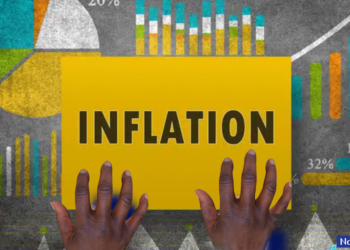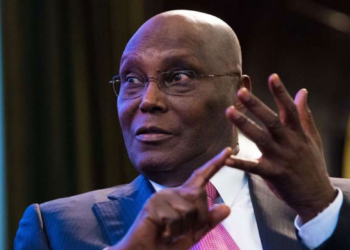The latest GDP report from the National Bureau of Statistics (NBS) shows Nigeria’s agricultural sector suffered a major setback as it posted the slowest growth in the last one year (4 consecutive quarters).
According to the report covering the second quarter (Q2) of 2019, the country’s agriculture sector grew by 1.79% in Q2 2019, compared to 3.17% growth recorded in Q1 2019. This means growth in Nigeria’s agriculture sector declined by -1.38%.
[READ MORE: Nigeria’s GDP slows to 1.94% in Q2 2019, as non-oil sector contracts]
By the numbers: Analysis of the Bureau’s report shows that the country’s agricultural sector grew by 1.79% in Q2 2019, the lowest growth recorded since the sector posted 1.19% growth in Q2 2018. In Q1 2019, the sector posted the biggest growth among Nigeria’s three main sectors.
- However, this time, comparing the three key sectors which include agriculture, industrial and service sectors, the agriculture sector grew the slowest.
- While the industrial sector grew the highest by 2.10%, services followed by 1.94% growth, the agriculture sector Industries grew by 1.79%.
- Also, the value of agricultural produce In Q2 was estimated at N6.78 trillion, compared to N6 trillion in Q1 2019 and N8.1 trillion in Q4 2018.

Key growth drivers: Basically, there are four sub-sectors that makeup activities in the agricultural sector in Nigeria and they include Crop Production, Livestock, Forestry, and Fishing.
- From the analysis, Crop Production remains the major driver of the sector, accounting for 88.56% of the overall nominal growth of the sector. Meanwhile, from the real growth side, the biggest contributor to the sector (Crop production) grew by 1.94% in Q2 2019 from 3.27% in Q1 2019 and 2.48% in Q4 2018. This means within just a quarter, crop production growth declined by 1.33%.
- Also posting a decline is the Fishing sub-sector. It grew by 1.09% in Q2 2019 from 7.09% in Q1 2019 and 1.97% in Q4 2018. Within just a quarter, the fishing sub-sector dipped by 5.15%.
- Livestock subsector also contracted by -0.01% in Q2 2019 from 0.88% in Q1 2019 and 2.35% in Q4 2018.
- The only sub-sector that recorded positive fast growth was the Forestry Sub-sector. Forestry subsector grew by 3.23% in Q2 2019 from 2.19% in Q1 2019 and 1.73% in Q4 2018.
FG’s policies flawed: Despite the billions spent on a plethora of government policies, the agricultural sector failed to show much-needed growth. This time, it’s the slowest growth in a year.
- In November 2015, President Muhammadu Buhari introduced Anchor Borrowers Programme (ABP), to create a linkage between anchor companies involved in the processing and smallholder farmers of the required key agricultural commodities.
- Some of the objectives included increasing banks’ financing to the agricultural sector, reducing agricultural commodity importation, conserving external reserves and so on.
- The governor of the Central Bank of Nigeria, Gowin Emefiele recently disclosed that the bank had disbursed over N190 billion to smallholders’ farmers on ABP.
- However, a quick look at import data shows that Nigeria imported N236.2 billion agricultural products into the country as at the end of March 2019. This represents a 7.98% higher in value than in Q4 2018, and 28.1% higher than in Q1, 2018
What lies ahead: Despite billions spent on policies like ABP, and other agro–based policies, this suggests that the policies are not working as expected. Critics of the government will point to billions of naira spent on subsidies and direct loans to farmers as the opportunity cost of recording paltry single-digit growth.
- The decline in the growth of crop production sub-sector may partly be traceable to the planting season during the period. However, flood disaster which has frequently ravaged farmlands in the country can not be ruled out.
- While this lingers, the government has not succeeded in taking proactive measures to guide against the recurring decimal.
- On the sideline, the conflicts between herdsmen and farmers are yet to be resolved, and the resultant effect is evident in the sector’s bearish growth.
- In a bid to stop the herders-farmers conflicts, the FG attempted to introduce the Rural Grazing Area (RUGA) initiative, which Nigerians widely moved against.
- So far in 2019, the government has introduced the National Livestock Transformation, the suspended RUGA, ban on food importation and border closure.
- While the latest partial closer border is causing spikes in food prices, the government has huge task ahead to craft out proper policies to rescue the country’s ailing agricultural sector.
- One thing that is crystal clear is that while one policy has not lived up to expectations, the government is brewing to implement several others.
[READ ALSO: Aviation sector to contribute over N1.2 trillion to Nigeria’s GDP by 2020]






















I was invited to a join a cassava growers association set up to disburse Anchor Borrowers Programme (ABP) In 2016. Members fees was 1k, ₦50 every meeting, 2.5k market land clearing contribution. By the time I heard of it they’d had 10 meetings making a total of 4k. When the money comes, 240k, we can grow 4 acres of cassava which they would supply, which would be bought from us at a guaranteed price of 100%, pay back the loan and the small interest and clear a tidy profit. Except those at the meeting were not amongst us cassava growers, and they could arrange land for a fee land for anyone who didn’t have any, and a little digging brought up a fish ABP, a yam ABP, pepper, corn, chicken, pork, just about everything ABP filled with people who knew nothing about what they were ABPing! No money ever surfaced in the end nor did I join, after a bit more digging finding they’d done the same thing a few years back and someone had run off with all their dues. Makes me wonder who it is that is stopping Buhari’s policy from working though.
Confuse government,is only God will help us